Sculpture and Performance, 2022
Paramour of the Whirlpool is an operetta I premiered this summer in Berlin at Trauma Bar Und Kino. Working with two incredible actors and vocalists (Justyna Chaberek and Lori Baldwin), this show has felt for me like pin pushing through the paper of desire; a definitive step veering myself back into a material practice, and into directing other performers and removing my body from the stage. Returning to animatronics after over a decade, I wouldn’t have been able to create these puppets without the material expertise of Ari Neilsson.
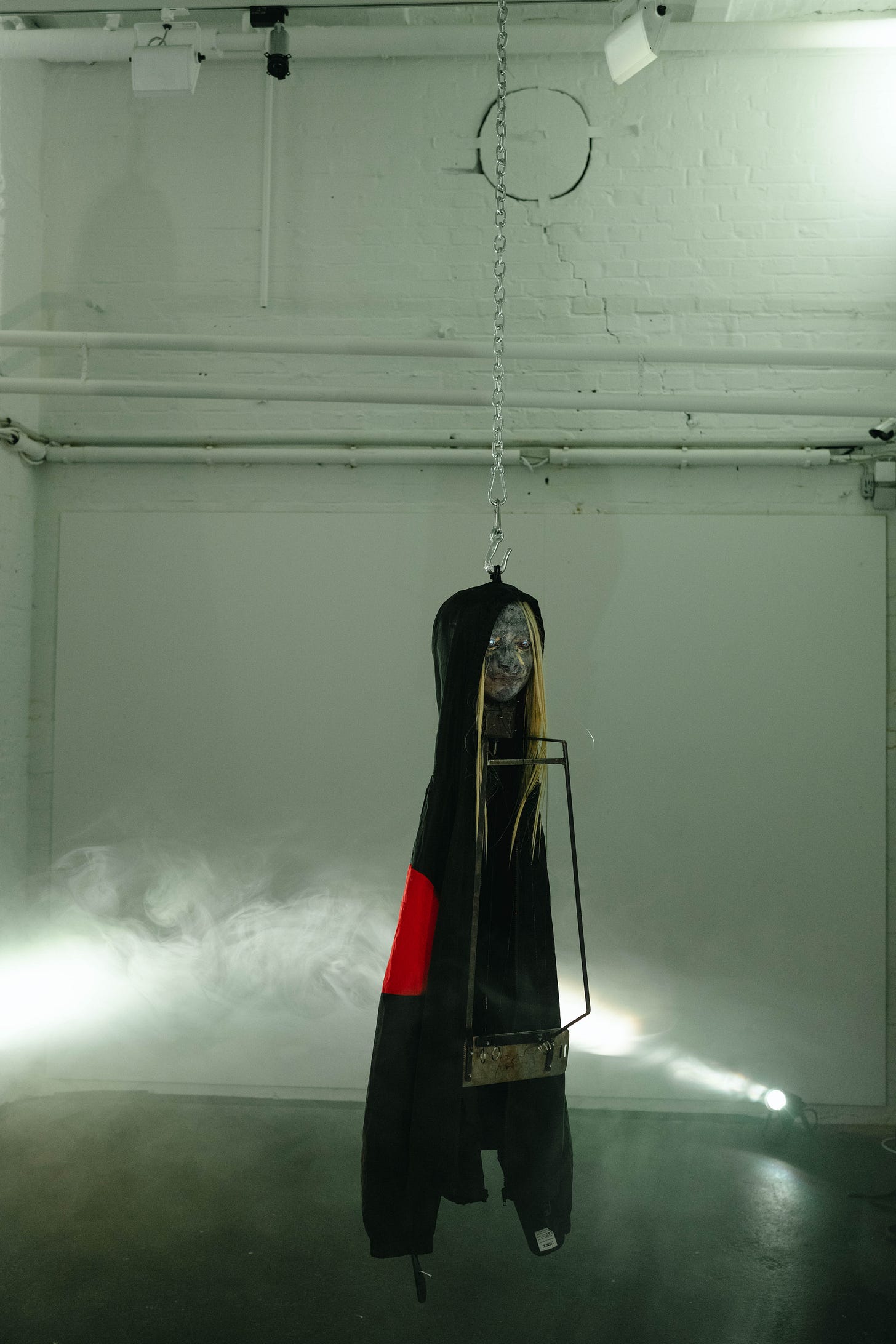
The name, Paramour of the Whirlpool, comes from a poem by Edward Leer, a musician, poet, illustrator, and author who was known for his literary nonsense. When thinking of an analogy about giving one’s self fully over to something, I was thinking of this phrase and how someone might/could fall in love with something as deep and powerful as a whirlpool; that it would consume you fully into the depths of its waters, uncertain of where you will end up on the other side.
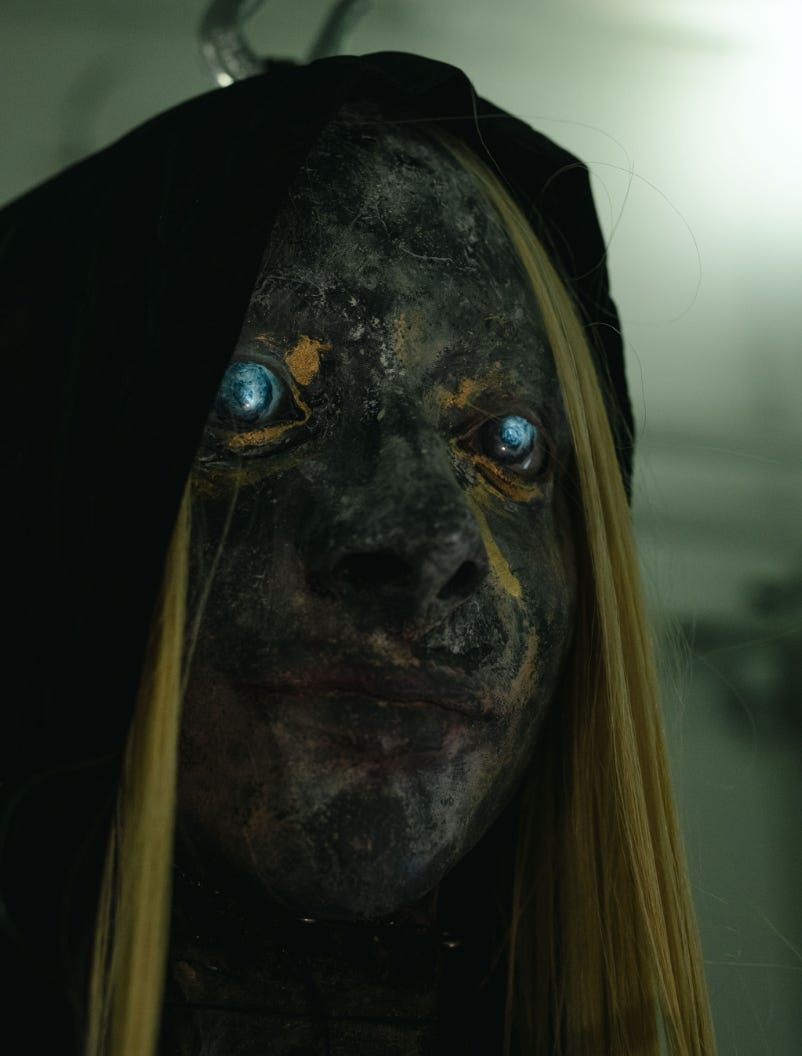
Thinking about the plunge into darkness (the autumn equinox just one week away) and our collective fear of our own darkness and our shadow parts of ourselves, I am beginning to believe in the vitality of acknowledging and sitting with the darkest parts of ourselves, as it is one of the only ways to truly acknowledge the entirety of our whole as human beings. Lessons in being with darkness, forthcoming.
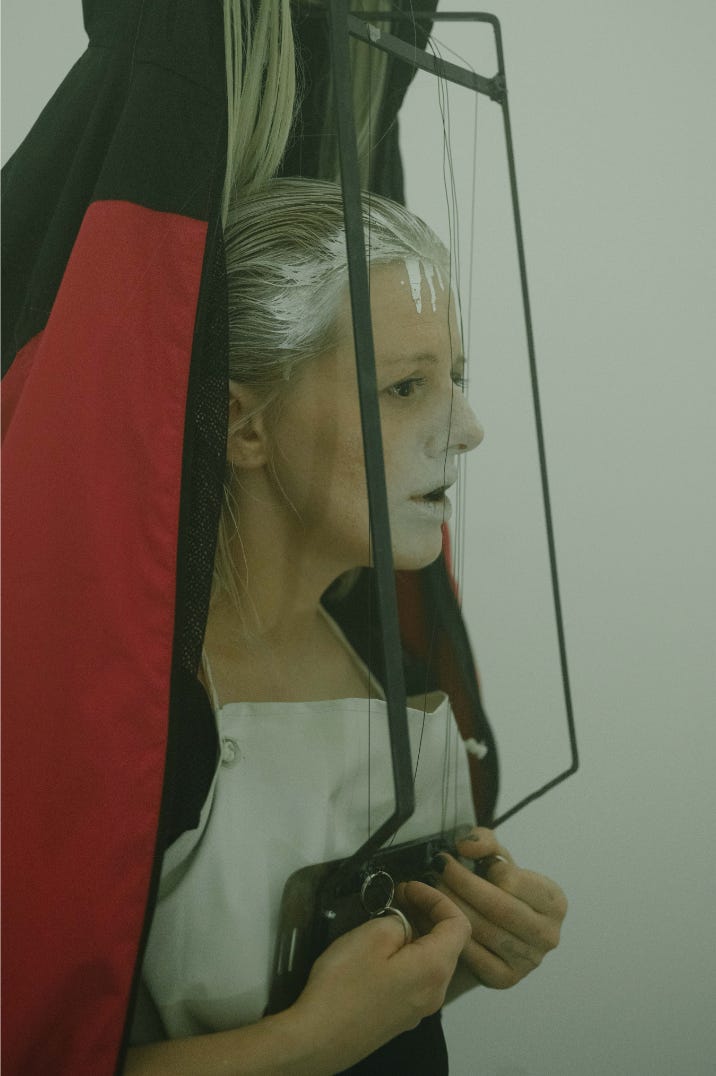
One of my favorite books, Dhalgren by Samuel R. Delaney, a circular and hauntingly irresolute science fiction novel, opens with the following passage:
“to wound the autumnal city.
So howled out for the world to give him a name.
The in-dark answered with wind.“
Writer William Gibson regarded Dhalgren, with all its strange and seemingly terrible and amnestic themes, as “a riddle that was never meant to be solved”
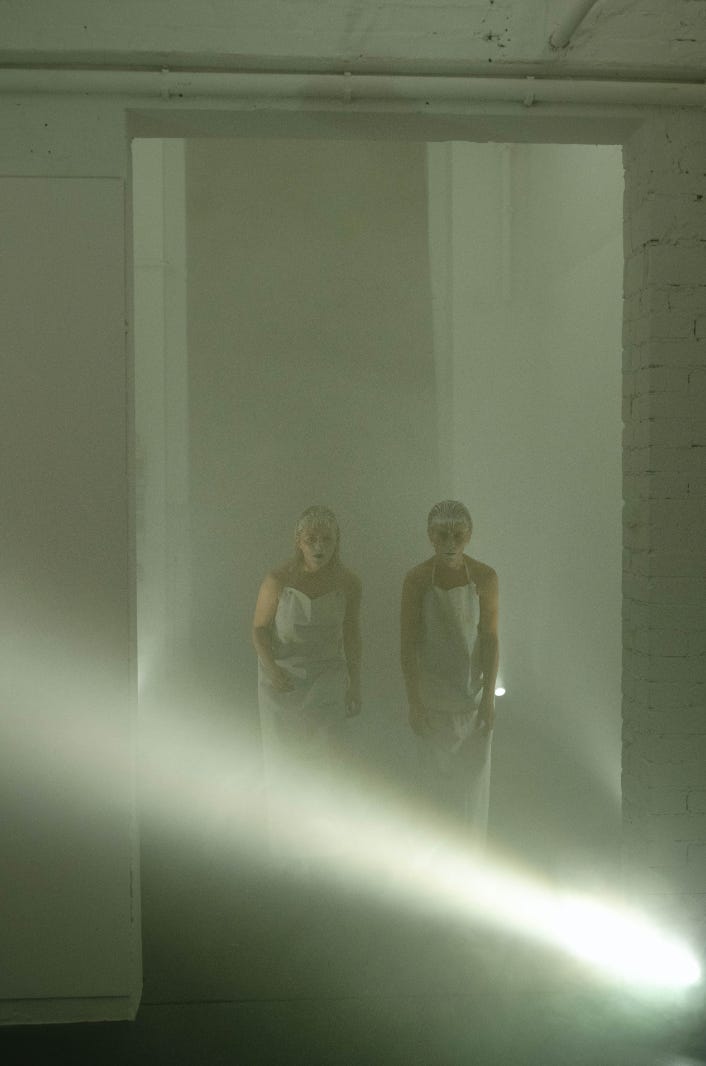
Much like Dhalgren, I am thinking of Paramour, which operates on an approximately 50-minute loop, as an irresolute wandering and meandering through song, text, and meditation. What I have always loved about puppetry is the expansive potentials that are lured out of material gestures; the face or hands or clothing of an animate creature embued by human movement can dissolve narrative convention. My favorite puppet shows are often not narrative, moralizing tales, but rather wandering studies in character, essence, and nuance. Much like Fellini and his portrayal of ambiently decorative (yet strikingly important) parts of humanity, I am moved by the unnamable parts of ourselves that we are able to recognize within the life of a discreet, seemingly sentient object.
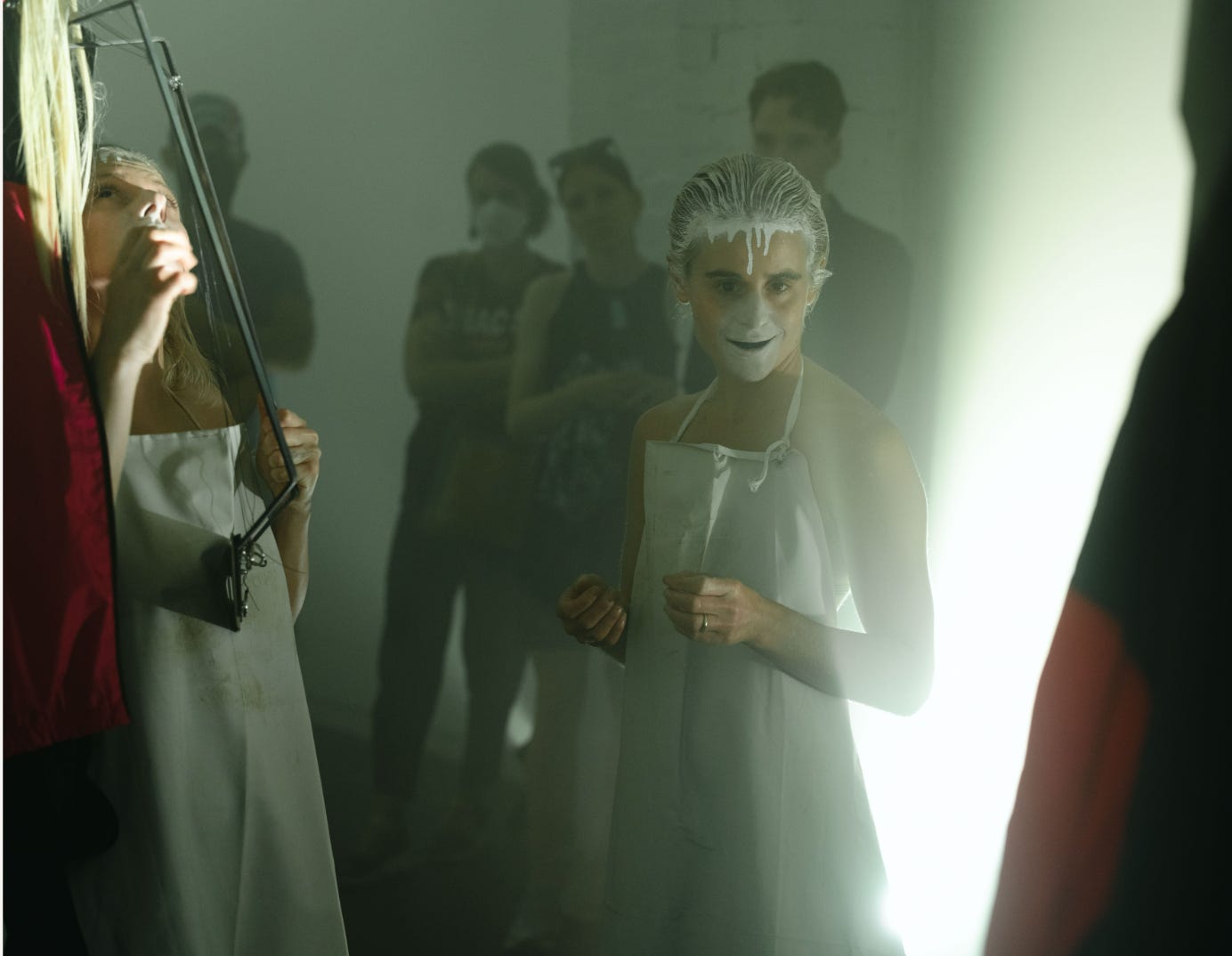
In Paramour, Lori and Justyna play the role of being somewhat utilitarian psychonauts, as though the role might be a profession. A “psychonaut” refers both to a methodology for describing and explaining the subjective effects of altered states of consciousness, including those induced by meditation and to a research cabal in which the researcher voluntarily immerses themselves into an altered mental state in order to explore the accompanying experiences.
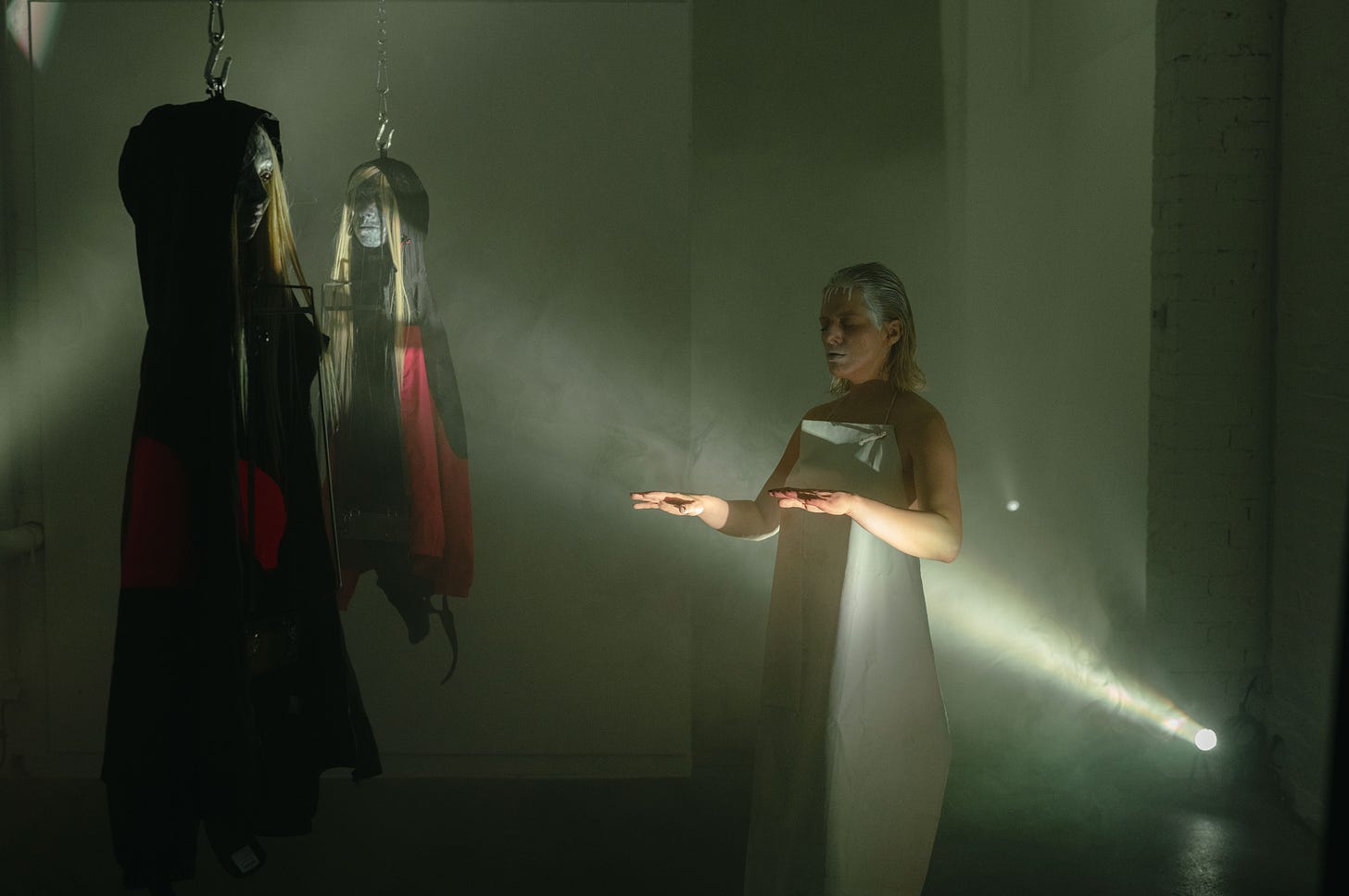
\In the performance, the two traverse various modalities of transmutation and communication between themselves and their tulpas, at times narrating to the public how and why tulpamancy works:
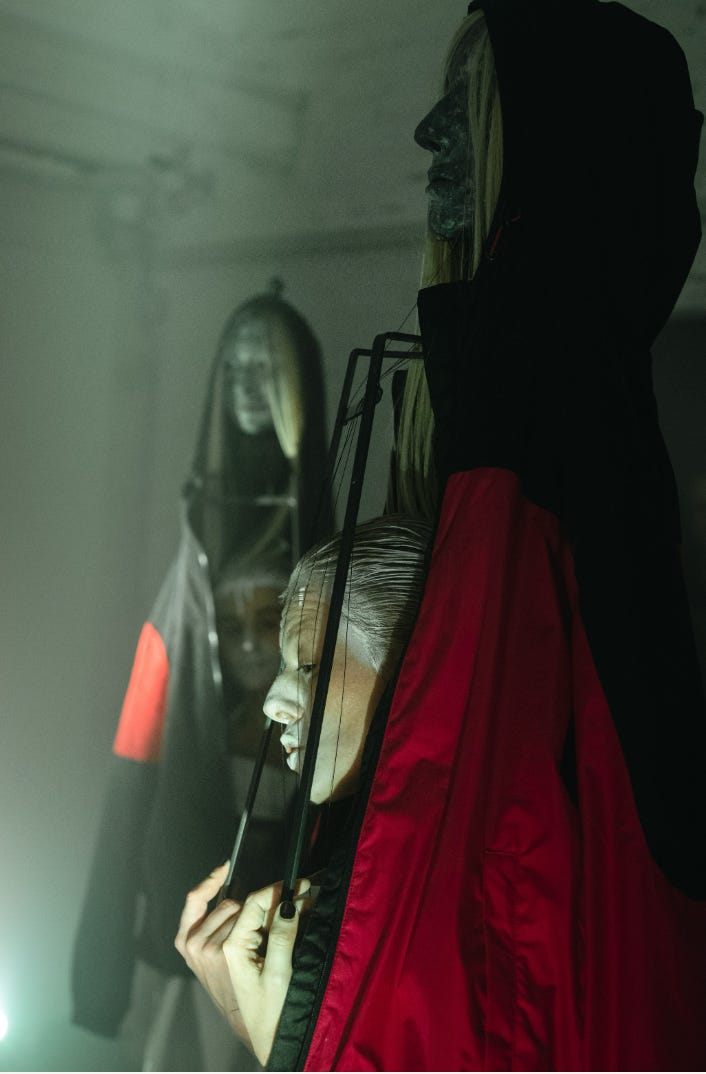
L: More developed tulpas can manifest as voices in the mind of the host or as vivid hallucinations that can affect one or more of the host’s senses. Tulpas are commonly reported to be capable of temporarily accessing and controlling the physical body through practice and consent with the host. Spiritual consent is a regulatory principle of connecting with the shadow self.
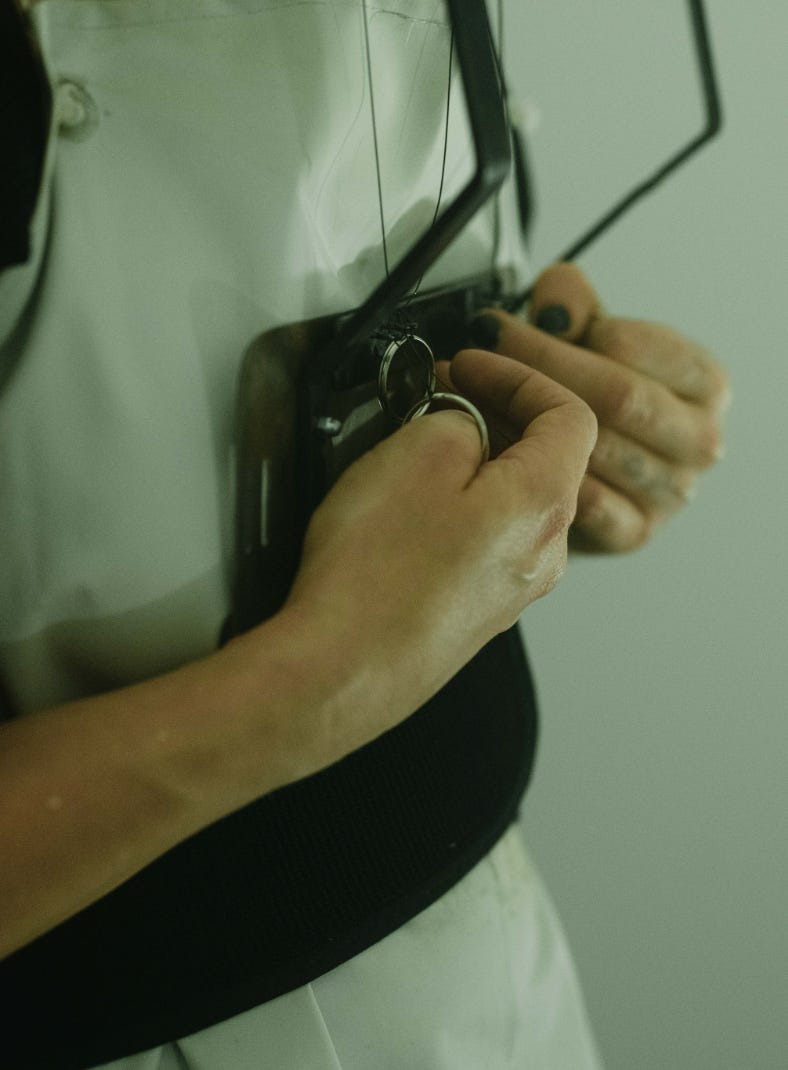
J: In recent years, a subculture has formed online revolving around creating and interacting with tulpas. The general consensus amongst the online subculture is there is nothing supernatural about tulpas, instead, they are believed to be explainable by human psychology. Many websites have user-written instructions on how to create a tulpa, although modern guides usually lack a Buddhist conceptual framework in consideration of a tulpa as a sentient being.
L: It is worth noting that the communities which describe these anecdotal techniques and results surrounding the creation and experience of this phenomenon are consistent across themselves with their information and terminologies. The extent to which user experience reports share commonalities suggests tulpas operate through a common underlying mechanism across different brains. The exact nature of what a tulpa is and the mechanisms on which it acts remain subjects of speculation within the tulpa community.